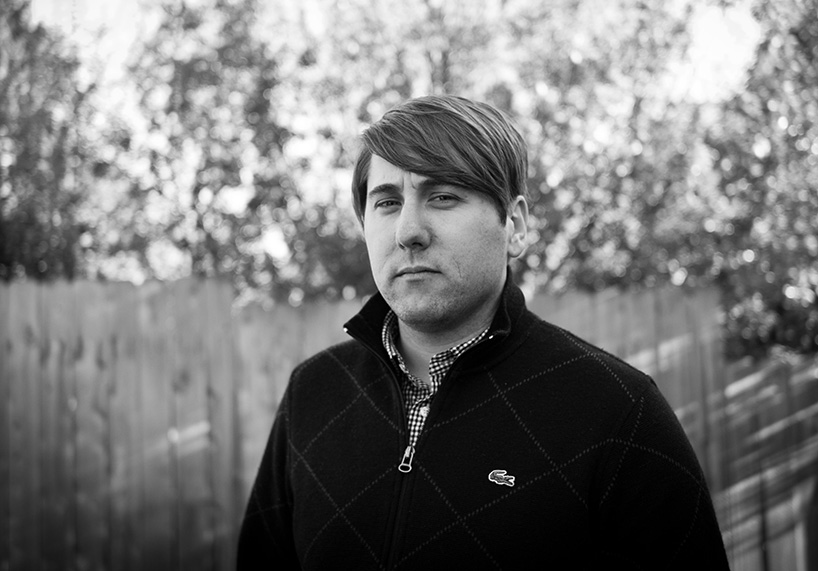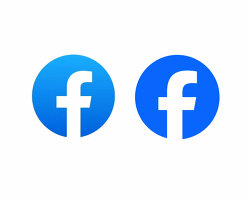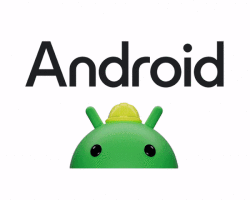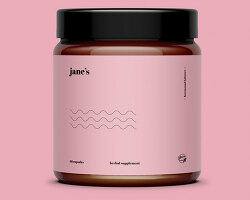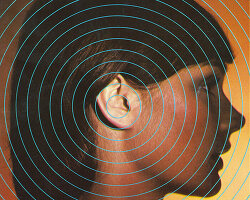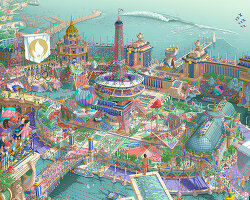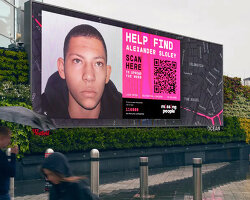carl de torres‘ eponymous studio is based in oakland, california and specializes in the creation of ‘bold, unique visuals for print, digital, and branding purposes. carl took some time out to tell designboom more about his career so far and the importance of what you listen to while you work.
DB: please could you tell us about your background, influences and why you became a designer?
CDT: I grew up east of los angeles. I always liked to draw but never pursued any training until high school. after that I bounced around for a while and then moved to san francisco where I soon attended the california college of the arts, where I followed my love of drawing and enrolled on the illustration program. for better or for worse it never occurred to me to take any graphic design classes. I loved to draw and wanted to spend my college experience drawing and not clicking. by the good graces of legendary art director bob ciano I landed a ‘temporary’ gig at wired magazine. this temporary gig ended up lasting four years. I worked my way up and learned everything I could about art direction, design, typography, illustration, information graphics and storytelling. I hired, worked with, and learned from some of the best designers and illustrators in the world. after four years and dozens of design awards later I felt that I had learned everything I could and set my sites elsewhere. my first big client was IBM, which i continue to work closely with today. I now work with about fifty clients ranging from fortune 10 corporations to non-profits. I officially started my studio in 2010 and since then have completed over 600 projects. it’s been an amazing journey so far.
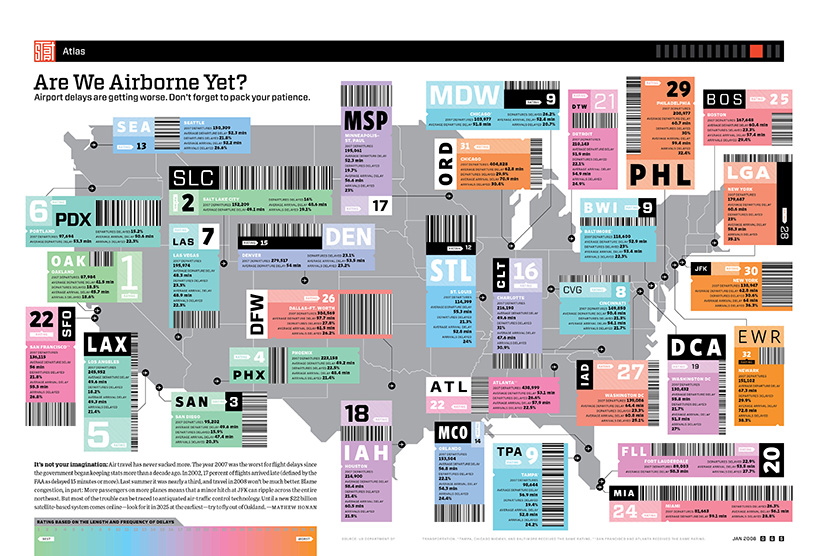
layout designs for wired magazine
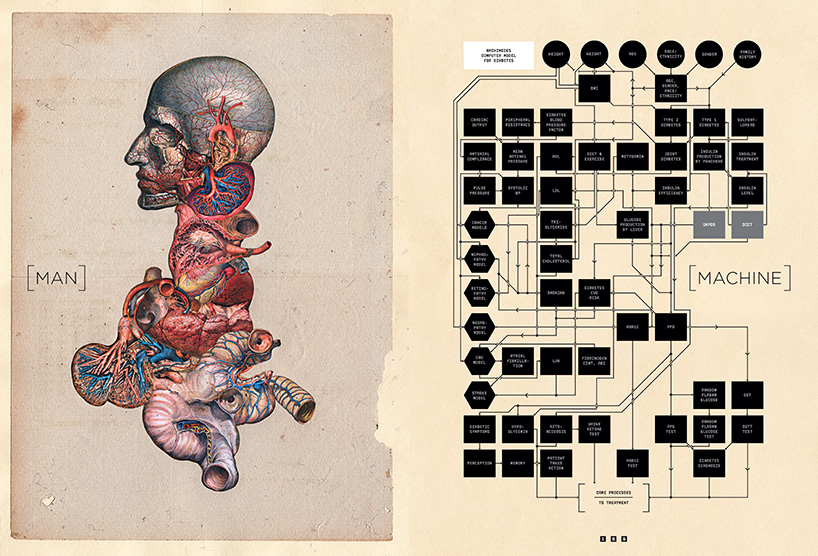
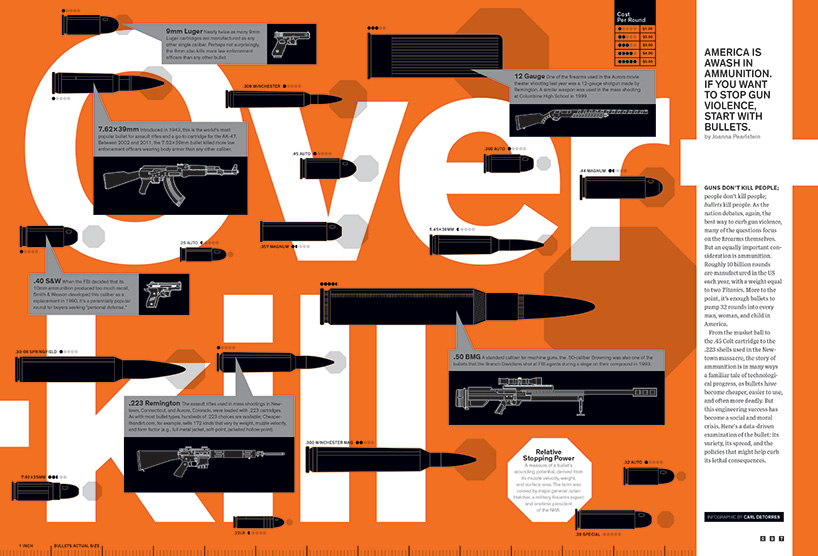
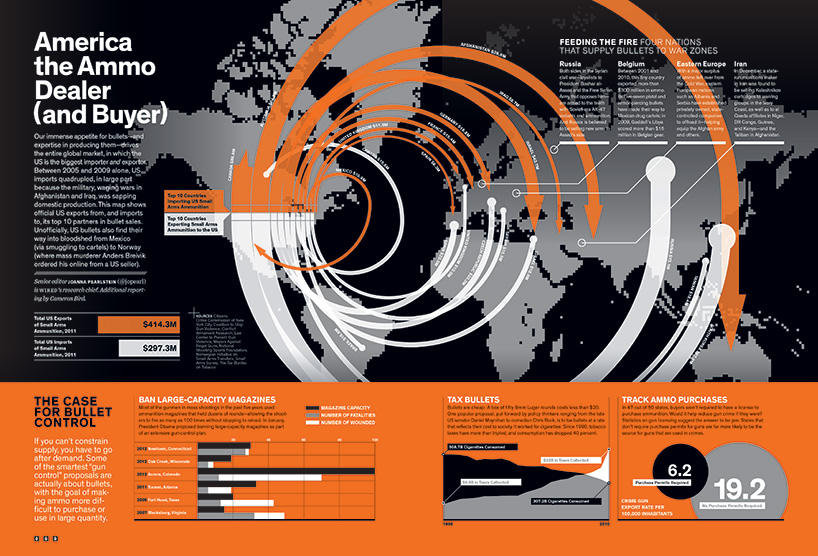
DB: who / what has influenced your work the most?
CDT: anton stankowski, paul rand, milton glaser, albrecht dürer, michael place, peter grundy, dugald stermer, this list goes on and on. one common thread you will find with these incredible talents is that they can think, draw, and design. while I think it’s important to understand design history and the current design community it’s equally important to get out of the studio.
DB: which have been your most significant and satisfying projects to date?
CdT: the wired era work will always be important to me because it really was my formal design education. it was there that I learned how to truly think conceptually. my work for IBM continues to be an amazing experience. they are constantly challenging me with smart projects and really allow me the freedom to find new and interesting solutions. the IBM think exhibit posters were a highlight for me because I was given complete creative freedom — IBM asked me to create one poster for them about the exhibit so naturally I created six instead. this series may be one of the most awarded and celebrated pieces I’ve ever done. but honestly, whether big or small, the most satisfying project for me is whatever I’m working on at the moment. I love my job and I’m very thankful for the kind of work I’m asked to do.
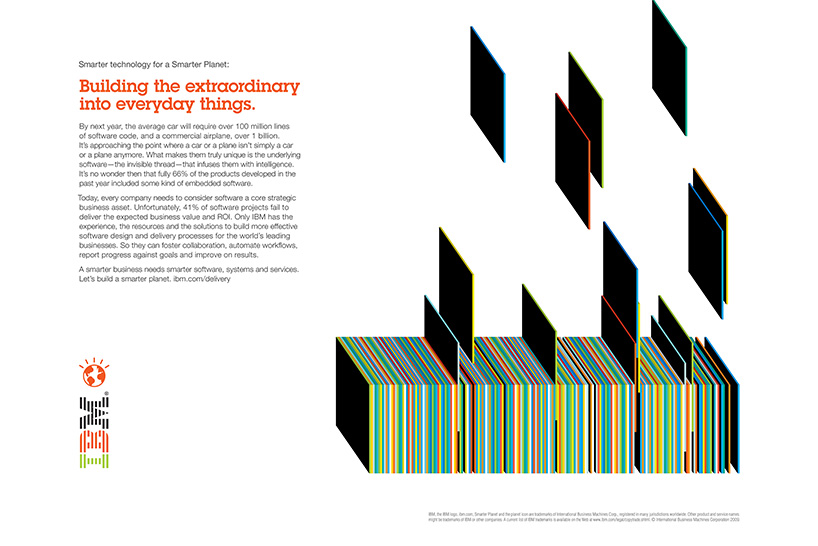
IBM smarter planet campaign
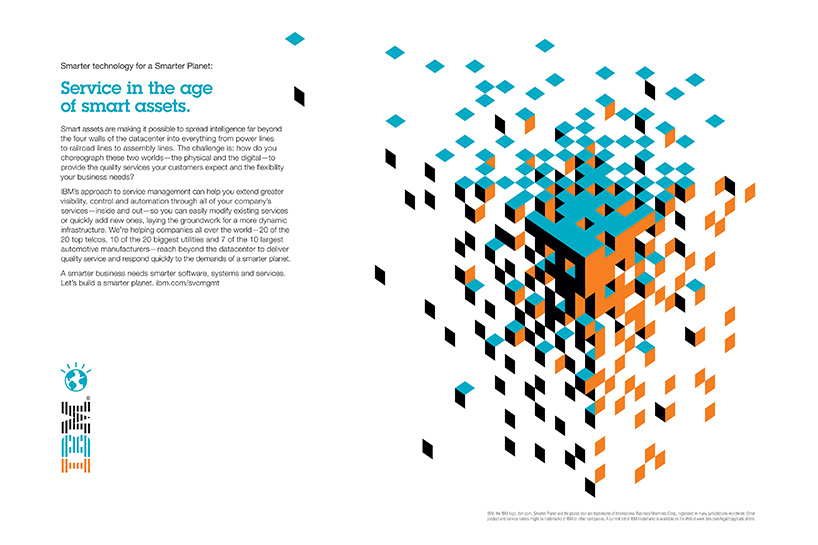
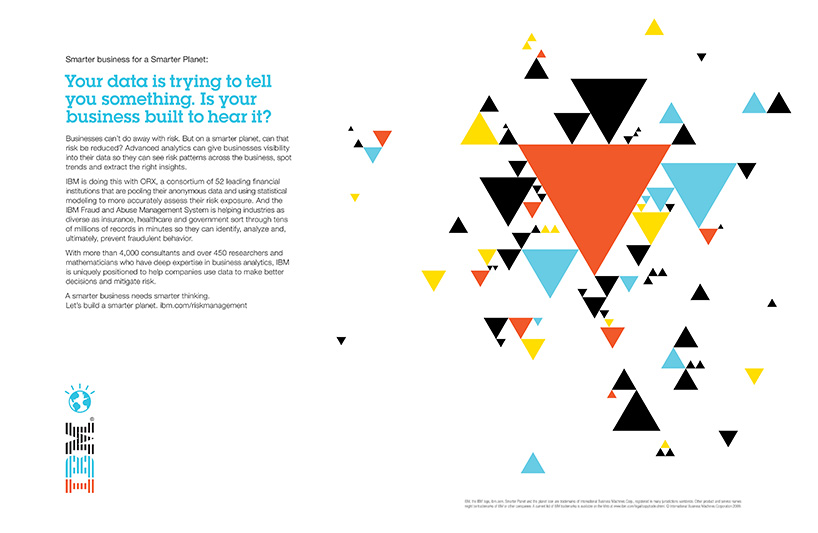
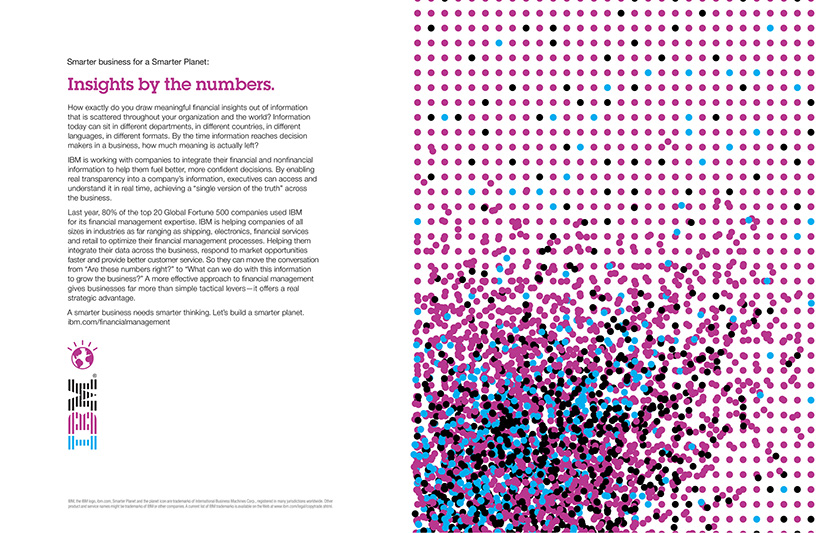
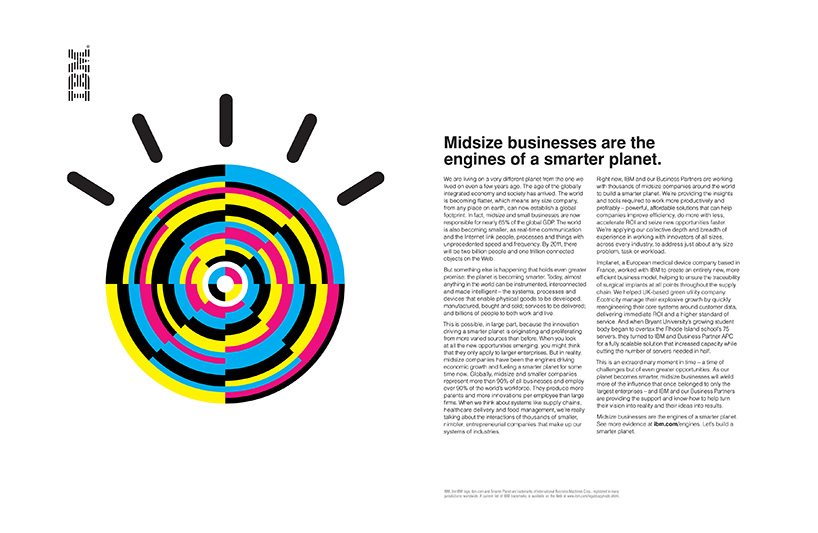
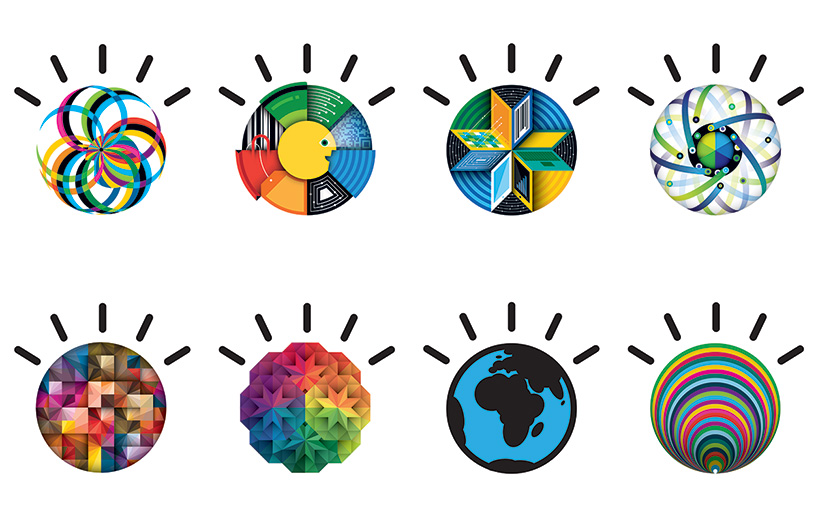
icons designed for the IBM smarter planet campaign
DB: how would you describe your style to someone who hasn’t seen your work before?
CDT: graphic, colorful, bold, direct, honest, and conceptually driven. I like to think that my work has a sense of style but is not defined by that style. my first concern is effective communication — style is a by product of that effort.
DB: are you able to synthesize concepts easily or is it a process of reduction from a more complex composition?
CDT: I generally have a great ‘hit rate’ with my clients. very rarely do I get caught in extensive revision stages. I think there are two reasons for this. first, I really open my process up to my clients and bring them along for the ride. this reveals to them that my decision making process is logic based and not stylistic or arbitrary. I find that clients greatly appreciate this level of transparency and enjoy seeing the thought process I bring to my work. the second reason is that I truly explore my projects. although I may only show one or two concepts to the client I generally push out into many different directions. this design play, or exploration is critical for me. it helps me work through my ideas and lets the bad ones get out of the way. I never stop once I think I have the solution. I try to solve it in different ways and constantly challenge my ability to come up with new ideas.
DB: what are the main differences between design and illustration for you?
CDT: as a philosophy, I make no distinction between design and illustration. it’s all visual communication to me. sometimes I harness images to tell stories, sometimes I use typography, other times I use data. my best work happens when I get to flex all these muscles on a single project. I try to operate at the space between disciplines and avoid definition.
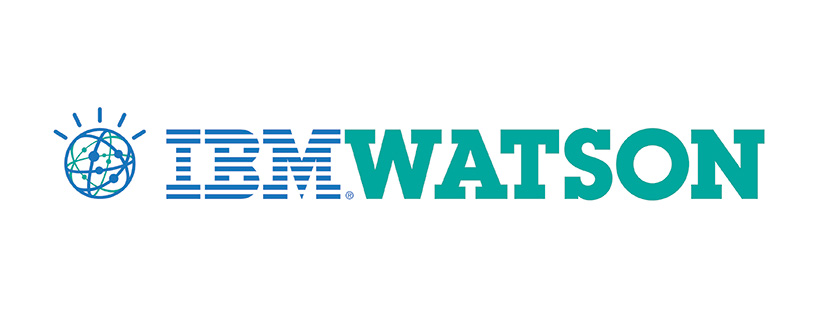
IBM watson logo

IBM think poster series
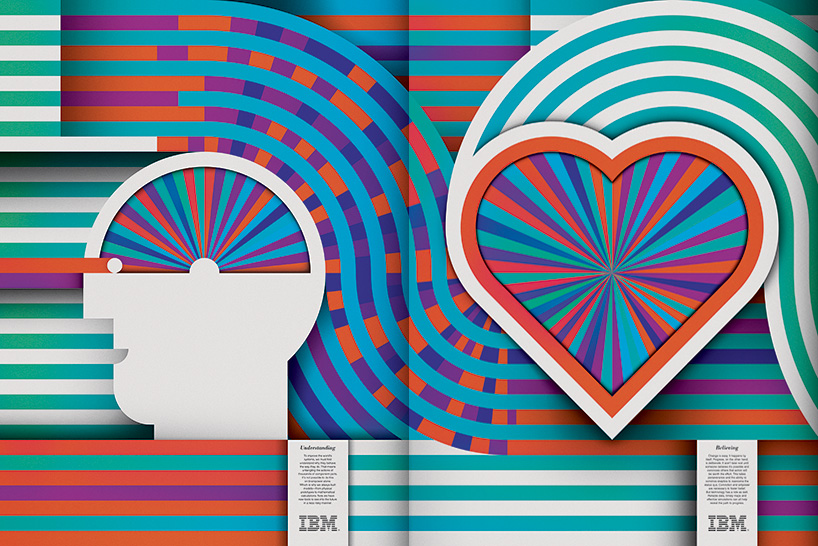
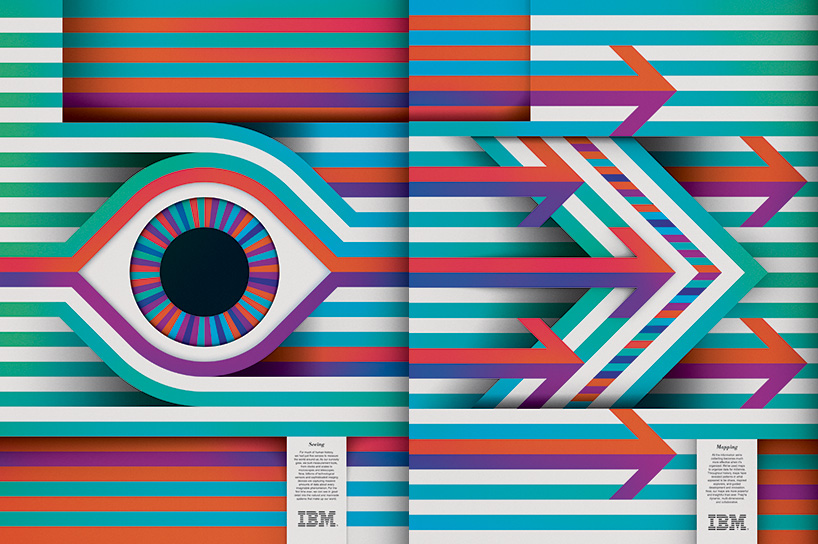
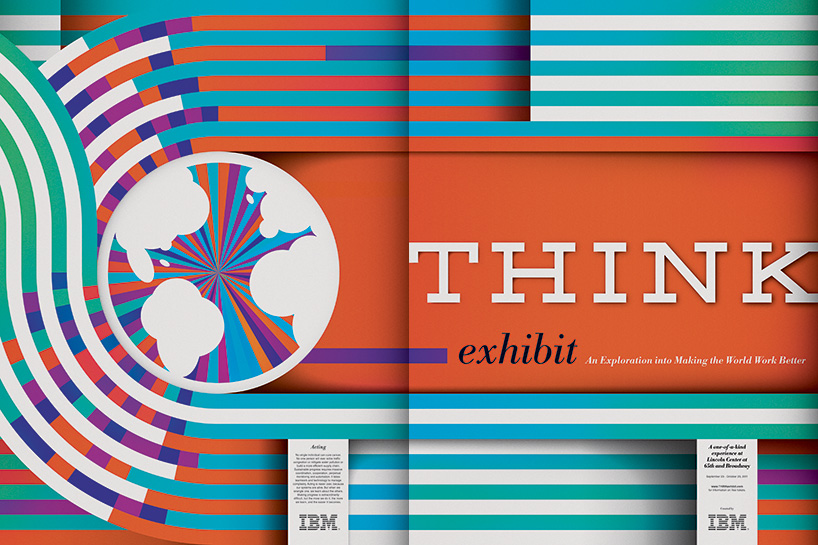
DB: what mediums do you work with to make your illustrations and which is your preferred one?
CDT: I’m a huge advocate of sketching so most of my ideas or concepts start out with pen and paper. however, I rarely show ink sketches to clients. I don’t believe they translate enough information to be an effective presentation tool. over the years I’ve developed a sort of visual shorthand for expressing in just a few lines how certain constructions or arrangements might work. I guess you can call them visual notes of sorts. I try to develop as many as possible to thoroughly explore a concept. from there I edit them down and move directly into the digital space where I use the adobe design suite to give these ideas form. that’s generally my process.
DB: is there a medium you would like to explore further in the coming years?
CDT: I’m always dreaming of becoming proficient in motion graphics or interactive design but I’ve resigned to the fact that I’m an idea person. my most recent obsession is my new endeavor. I’ve just launched a new studio called StoryTK. my partner, jeffery o’brien, is a journalist that I met at wired years ago. together we’re taking our high level design and storytelling sensibilities and working with companies that have some tough stories to unravel. so far the response has been overwhelming and we’re already at capacity. the limits of what design and storytelling can achieve together is boundless. together we’re doing things that we could have never done alone. it’s an exciting evolution.
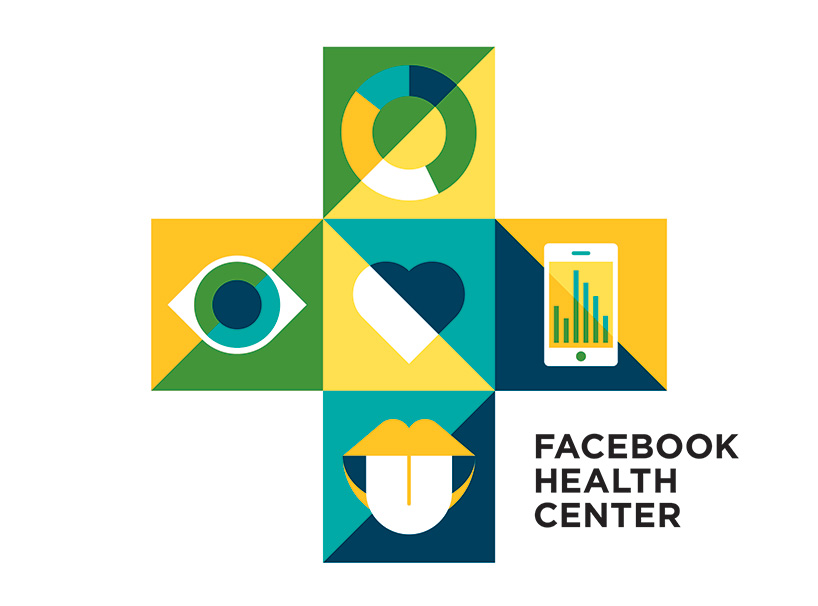
facebook health center identity – logo
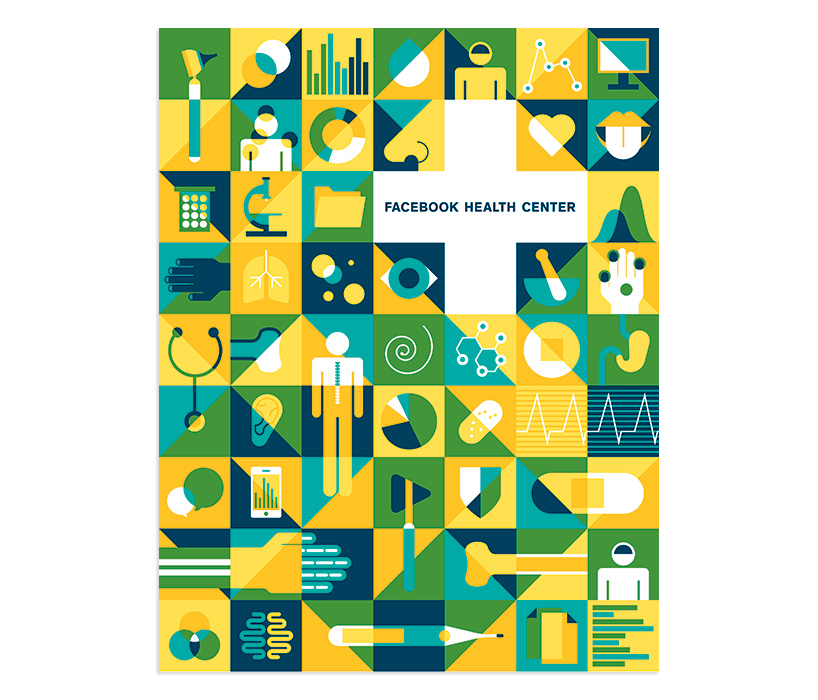
facebook health center identity – poster
DB: how do you think online design resources have influenced the design being produced today?
CDT: I love when people blog about things they like, especially when they explain why they like a piece of work. of course some blogs are better than others but at least you’re getting a curated experience. however, I must admit that I tend to dislike image book marking platforms. sites like pintrest and ffffound are a mixed blessing. yes, they allow you to discover or stumble upon new talent or emerging voices, but they also create a powerful tool for people to ‘sample’ work without giving any credence to why that work was produced, who it was produced for, and sometimes who actually made it. all you get is the image and rarely the story or intent behind the work.
since that is the case you can only assume that people are looking at these sites for purely visual and stylistic information. this is a terrible thing. on numerous occasions I have been briefed by agencies and shown mood boards of work that they had no idea I created. they would literally say, ‘we like how this artist uses shape and color and want you to be inspired by this.’ then there would be this uncomfortable silence and I’d say, ‘well luckily that should be easy and ethical because I did that piece.’ then everyone laughs and i cringe. many agencies and design firms will pillage online portfolios and image bookmarking sites and create huge archives of mood boards that they then use to pitch new work. sometimes the designers or illustrators that the agency used to pitch the campaign will be awarded the work, but more than often they won’t.
I feel that there’s something about this process that isn’t right. using another person’s work without their consent to pitch a product, style or idea is wrong. it reinforces the product and discredits the process. I’ve learned to choose my clients and agency partners carefully.
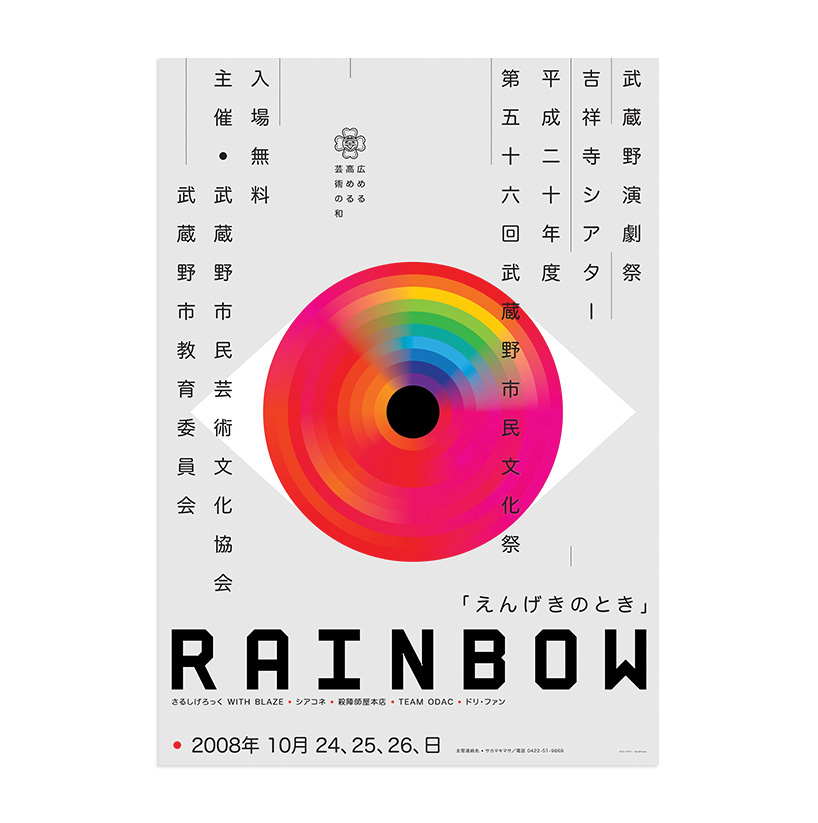
rainbow poster
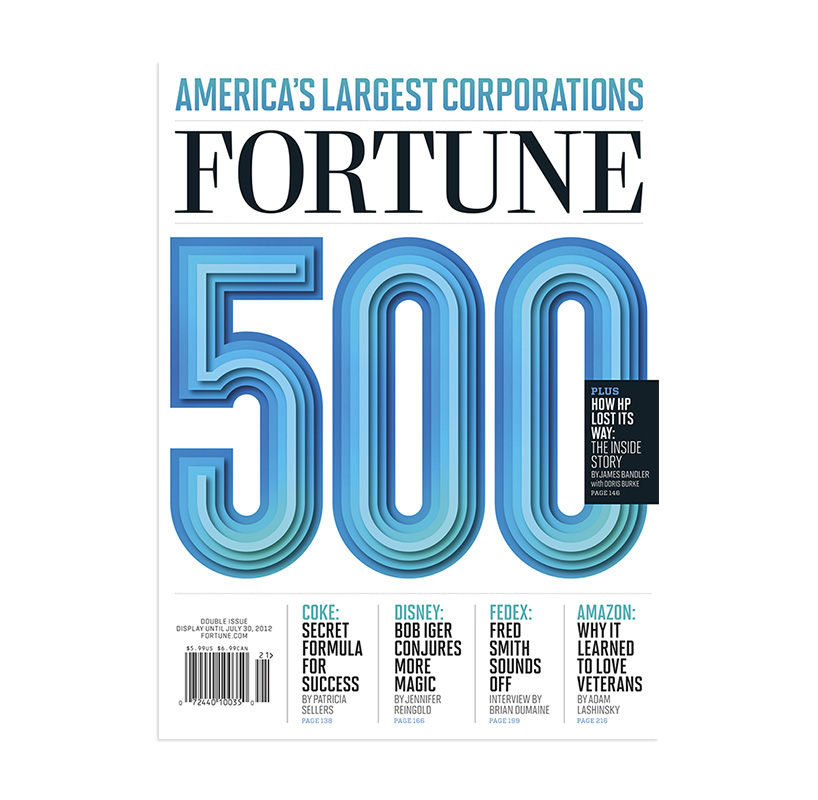
fortune 500 cover
DB: what compels you to design and what other compulsions do you have?
CDT: I like designing systems. modularity is a big part of my work. I like building things, ideas, designs, images that have a strong conceptual framework. I suppose I just like things to make sense, visually and conceptually.
DB: do you have any superstitious beliefs or rules that you live / work by?
CDT: be careful what you listen to while you work. design is about thinking. there’s nothing like silence to help you work through a complicated problem.
DB: what’s the last thing that made you say ‘wow’?
CDT: I see something almost every hour that makes me say WOW. this morning it was this brilliant shade of colors in my garden, followed by an amazing sausage I had for lunch, followed by a fantastic book on danish railway design that showed up in the post, followed by my sons inexhaustible energy after returning from school. I find inspiration everywhere.
GRAPHIC STUDIO INTERVIEWS (193)
LOGO DESIGN (244)
POSTERS (78)
PRODUCT LIBRARY
a diverse digital database that acts as a valuable guide in gaining insight and information about a product directly from the manufacturer, and serves as a rich reference point in developing a project or scheme.
